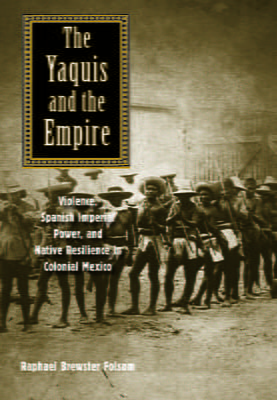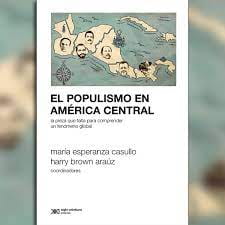A Review of The Yaquis and the Empire: Violence, Spanish Imperial Power, and Native Resilience in Colonial Mexico
A New Framework for Colonial Relationships
By Paula de Vos

The Yaquis and the Empire: Violence, Spanish Imperial Power, and Native Resilience in Colonial Mexico By Raphael Brewster Folsom Yale University Press, 2014, 312 pages
Winner of the 2015 Latin American Studies Association Social Science Book Award and runner-up for the 2015 David J. Weber-Clements Prize of the Western History Association, The Yaquis and the Empire presents a very readable revisionist account of Yaqui history and identity. Rafael Folsom writes with an enviable fluidity and brings alive historical personalities. He paints a vivid and memorable picture of the dramatic scenes he describes. Reading and interpreting documents with care, he is attuned to subtleties that other historians have missed. Thus, he is able to explore the motivations and worldviews of Yaquis, Jesuits and Spanish officials in a way that is reminiscent of the masterful work of Inga Clendinnen (especially Ambivalent Conquests, Cambridge 1989, 2nd ed. 2003) and Camilla Townsend (Malintzin’s Choices, U. of New Mexico 2006). At the same time, like these authors, Folsom weaves detailed accounts of battles and personalities into a larger narrative with a complex and important argument: that the relationship between Yaqui peoples and the various Spanish actors in the colonial system cannot be understood in terms of domination and resistance, but rather as one of constant negotiation and hard-won alliances that were at all times precarious.
Folsom begins his book with a brilliant depiction of the traditionally accepted view of the Yaqui as the archetypal resisters of Spanish encroachment but finds, through careful and detailed reading of abundant but underutilized archival sources from Mexico, Spain, Italy and the United States, that the opposite was actually true: the Yaqui were in fact some of the empire’s most important allies in “fringe” areas of northwestern New Spain. As well-known scholars Evelyn Hu-DeHart and Edward Spicer have argued, this does not, however, represent the triumph of Jesuit efforts at assimilation or “reduction” in the missions. Rather, the tenuous alliances forged between Yaquis, Jesuits and colonial administrators were based upon a policy of appeasement and exchange, where Yaquis offered their children and their cooperation to the Spanish in return for aid, gifts, and material assistance. In this way, Folsom argues that the Yaquis “reduced” the Spaniards as much as, if not more than, they themselves were bound to the colonial system. This attention to ethnographic evidence of the exchanges that took place, exchanges that historians and anthropologists have largely overlooked, makes Folsom’s argument particularly original and innovative. He is able to give agency to all actors without falling into simplistic notions of heroes, villains or victims. Rather, his account shows the complexity of the negotiations and illustrates that there were no easy “sides” to identify. Different factions within indigenous and European communities had different and often conflicting goals that kept their relationships in a constant state of tension and flux, all of which serves to give a much more satisfying explanation for what took place than can be provided when understood in binary terms of conquest and defeat or assimilation and resistance.
Folsom’s work in fact provides a new framework for understanding colonial relationships not only in the Spanish borderlands of northern New Spain, but throughout other “fringe” areas in the Viceroyalties and within the imperial core as well. In this way it stands out among much of the borderlands scholarship produced in the last two decades. Although the so-called borderlands regions remained squarely within the claimed jurisdiction of the Viceroyalty of New Spain for the entire colonial period, scholarship on the region has remained largely separate from that of the colonial “core” of central Mexico. Raphael Folsom’s monograph, however, like Cynthia Radding’s Wandering Peoples (Duke, 1997) and Ida Altman’s War for Mexico’s West (U. of New Mexico, 2010), has the potential to bridge the subdivisions within the field and be of interest to and significance for colonial historians generally. In particular, it engages with several emerging historiographical themes in the history of colonial Mexico. Folsom’s careful attention to the role of intermediaries, negotiation, and exchange in the colonization process joins a chorus of outstanding work by recent scholars, including Yannakakis, The Art of Being In-Between (Duke 2008), Restall, The Black Middle (Stanford 2009), and O’Hara and Fisher, Imperial Subjects (Duke 2009).
His work also contributes greater understanding of the role of native allies, or “Indian conquistadors,” in a relatively new area of scholarship that radically alters traditional understanding of Spanish conquest by highlighting, as Folsom does, the dependence of Spaniards on indigenous support. Works in this field (including Matthew and Oudijk, Indian Conquistadors, U. of Oklahoma 2007) serve as a basis for understanding conquest as facilitated by indigenous-Spanish alliances that go beyond the well-known collaboration with the Tlaxcalans.
The Yaquis and the Empire delves deeply into the processes of state formation that took place in Mexico’s Sonora and Sinaloa during the seventeenth century, a period that until recently has remained largely overlooked in the literature but was a crucial time in the maturation of a highly complex colonial society. In this way, Folsom’s work engages with some of the most important emerging historiographical trends in the field and is especially useful in that it ties borderlands studies together with those of the core Mexican regions.
Paula De Vos is associate professor of Latin American history at San Diego State University. Her current book project, which has received fellowship support from the American Council of Learned Societies, the National Institutes of Health, and San Diego State University, concerns the history of pharmacy, chemistry, natural history, and medicine in colonial Mexico.
Related Articles
A Review of Aaron Copland in Latin America: Music and Cultural Politics
In Aaron Copland in Latin America: Music and Cultural Politics, Carol Hess provides a nuanced exploration of the Brooklyn-born composer and conductor Aaron Copland (1900–1990), who served as a cultural diplomat in Latin America during multiple tours.
A Review of El populismo en América Latina. La pieza que falta para comprender un fenómeno global
In 1946, during a campaign event in Argentina, then-candidate for president Juan Domingo Perón formulated a slogan, “Braden or Perón,” with which he could effectively discredit his opponents and position himself as a defender of national dignity against a foreign power.
A Review of Born in Blood and Fire
The fourth edition of Born in Blood and Fire is a concise yet comprehensive account of the intriguing history of Latin America and will be followed this year by a fifth edition.




